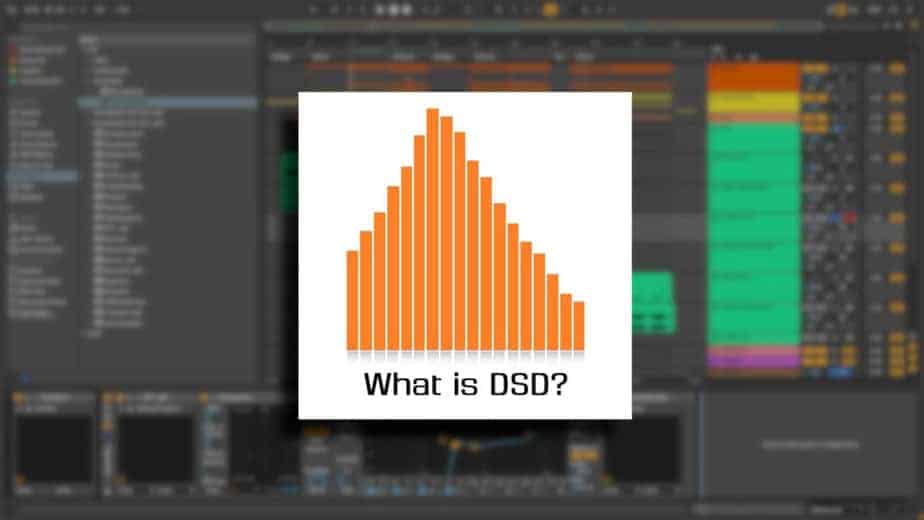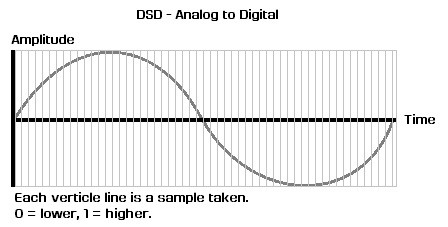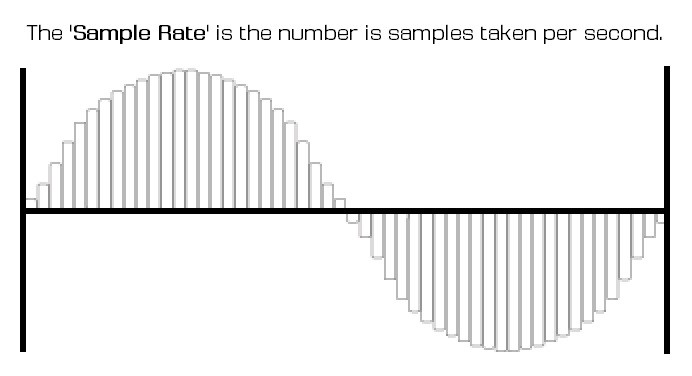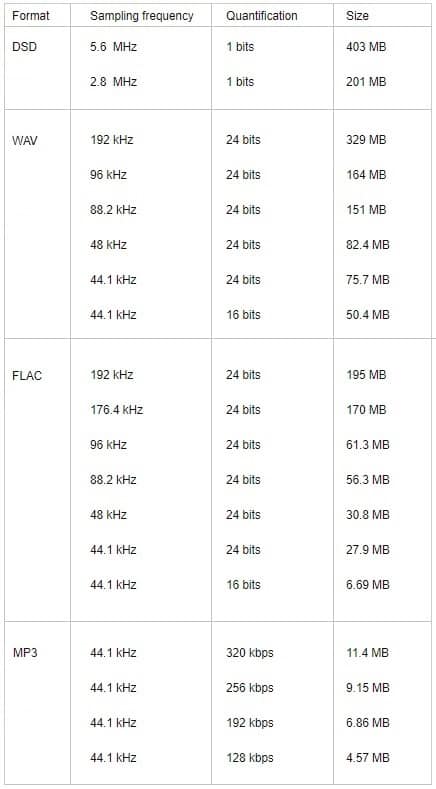
What is DSD?
So, you have stumbled across the DSD format on the interwebs and thought to yourself, ‘What is DSD?’ Well you have come to the right place. Let’s dive in and take a closer look at ‘what is DSD’.
DSD, or Direct Stream Digital, is an audio format that encodes using a single bit of information and a fast sample rate for high-resolution recordings and was created by Sony and Philips as a way to preserve the ‘analog’ sound that gets lost in traditional PCM encoding methods such as WAV or FLAC.
DSD recordings are still relatively rare compared with these PCM alternatives but DSD fans claim the format is as close to analog as digital gets.
How DSD is encoded – What is DSD?
DSD takes samples of the original audio signal at a very high sample rate.
These samples tell us whether the current sample is higher or lower than the previous one.
- If the sample is lower than the previous sample, it gets a 0.
- If the sample is higher than the previous sample, it gets a 1.

It’s possible to draw the analog waveform simply by looking at the density of 0s and 1s. The more 0s there are, the lower the waveform goes, the more 1s there are, the higher the waveform goes. A balance of the two values means very little signal at all.
There are 4 different quality DSD encoding options:
- DSD 64
- DSD 128
- DSD 256
- DSD 512
The higher the DSD number, the higher the sample rate and quality.

A Simple formula can be used to work out the sample rate of each DSD option.
Formula: 44.1kHz x DSD number.
Example: 44.1kHz x 256 = 11.2mHz
CD-quality audio encodes using a bit depth of 16 and a sample rate of 44.1kHz (16/44.1kHz), whereas a standard DSD file, also known as DSD64, is roughly equivalent to a bit depth of 24 and a sample rate of 88.2kHz (24/88.2kHz).
Why people use DSD – What is DSD?
Generally, people will use DSD for home Hi-Fi purposes because of the preservation of the analog feel.
Because of this reason, DSD is typically used when listening to instrumental music such as classical and jazz music.
DSD can be used to make electronic music but during the process will be converted to PCM for manipulation, and back to DSD when ready to release.
This seems counter-intuitive as the analog vibe is lost during the conversion to PCM.
How do you play DSD? – What is DSD?
The DSD format has gained a decent amount of traction over the past few years. This means that more digital equipment is being created to support the DSD format.
Most recent mid-to-high-end digital audio equipment tends to be compatible.
Even newer smartphones such as Apple iPhone and some Samsung Galaxy support DSD natively.
You may occasionally come across the formats DSF and DFF. These are also DSD files only with some slight metadata differences.
Pros
- DSD is a high-resolution audio format meaning the audio quality is very high. This is great for listening to your favorite music but not so great for music production ort audio manipulation of any kind.
- Another advantage of the DSD format is the wide volume range of 120dB meaning it can go significantly louder than CD-quality audio that has a volume range of 96dB.
Cons
- In order to manipulate a DSD file, it has to be converted to PCM beforehand unless the software is capable of completing such tasks and then converted back to DSD after processing.
This makes WAV and better options for audio processing and manipulation as there is no conversion required and can be done in most digital audio workstation software such as Ableton and Logic x.
- DSD files tent to have a higher level of noise compared to PCM formats and is a byproduct of the 1-bit encoding.
The human ear can hear frequencies from 20hz (Bass noises) to 20kHz (high pitch noise) and the noise generated from DSD encoding generally falls above 20khz.
- One of the biggest problems with the DSD format is their large file sizes.
To give you a comparison, an average CD-quality song can be anywhere close to 50 MB, where the lowest DSD quality will be around 200 MB.
Below is a table with average file sizes from different formats.
Please note that these are not 100% accurate and can vary a lot depending on the original audio signal.

Summary
Although DSD has been around for years and years, it still hasn’t found its way into the average user’s day to day life. It is still a great format, but it is more of a niche format that can be used for specific purposes.
If you are an audiophile and love the beautiful rich analog feel of a record player, DSD might be the format for you.
On the other hand, if you are a music producer like me and love diving deep into sound design and sound manipulation in general then DSD might not be the right choice.
I hope this article has helped you develop a better understanding of the format and its uses.
Want to learn more about audio formats?
As always, good luck and happy producing.